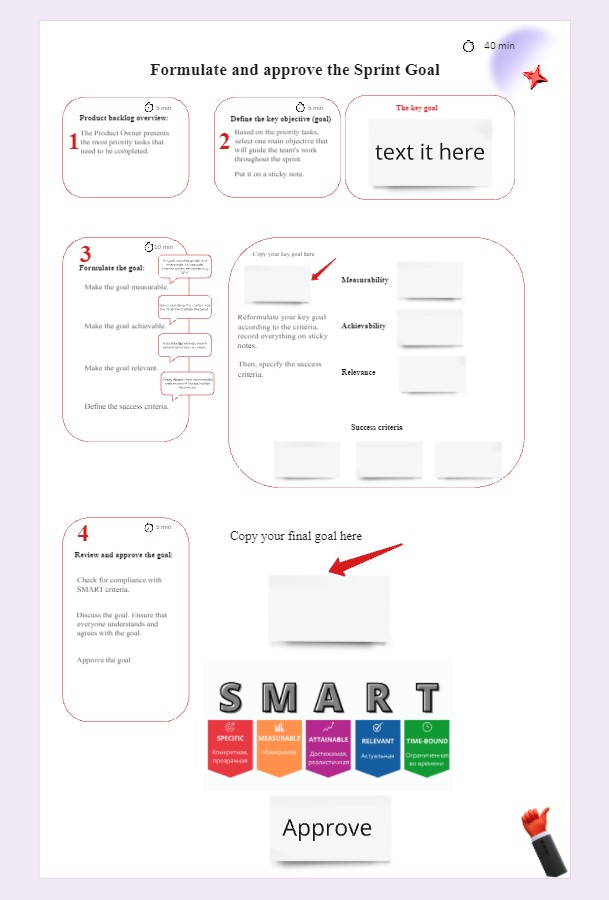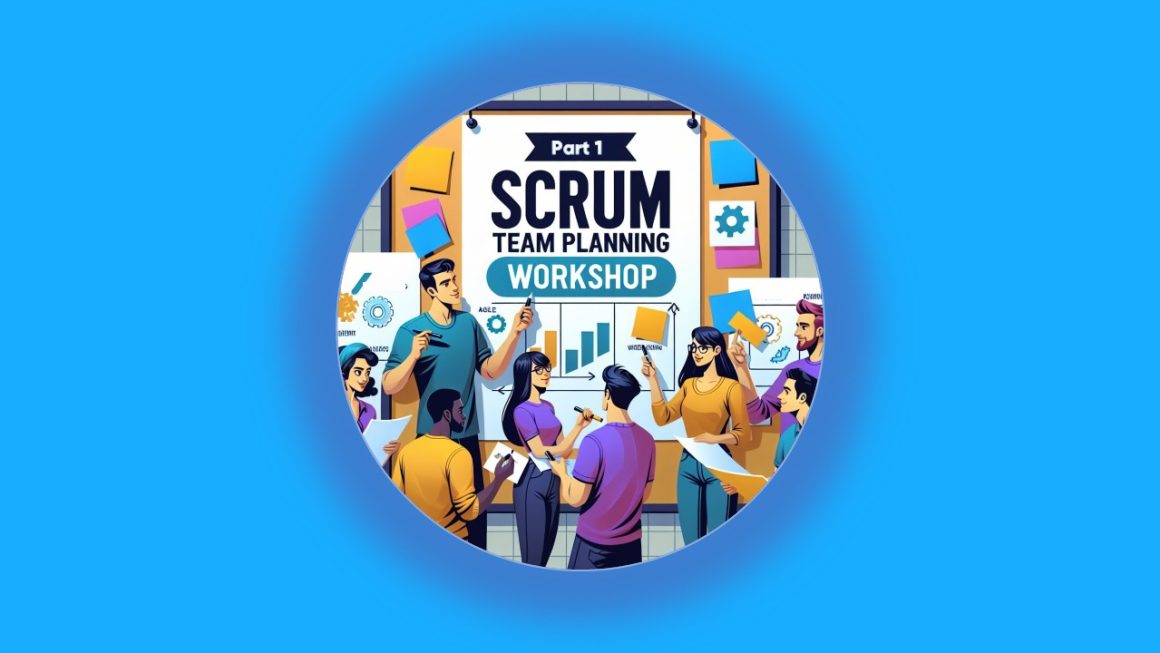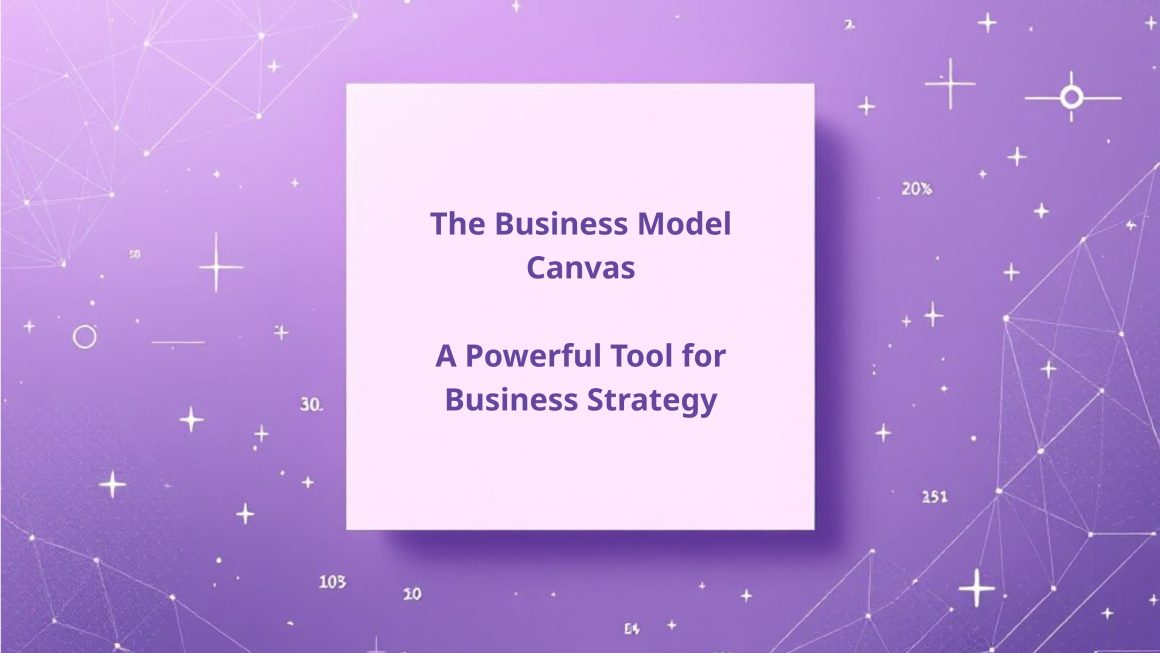Approximately a month ago, at a retrospective in one team that is actively implementing processes according to the Scrum framework, the participants raised the issue of the need to train in effective Sprint planning. Particular attention was paid to the need to develop skills in risk assessment when estimating the volume of work that the team takes on within each iteration. The request was formulated and I took on the goal of developing a workshop for the team and conducting it. Having voiced my idea, I received the consent and support of the team.
Before proceeding with the creation of the workshop, I talked to my colleagues to find out if it would be possible to use existing materials and adapt them for our team. However, no such workshop was available, but the colleagues shared other useful resources. In the process of developing the workshop, I used some of them.
During the preparation, it became clear that the workshop would consist of two parts:
First part:
- Structure of Planning
- Roles and areas of responsibility,
- What the team has at the beginning of Planning and what artifacts should be obtained as a result
- Practice of formulating the Sprint Goal.
Second part:
- Estimating tasks and possible ways to allocate time for unforeseen circumstances
- Conduct a self-assessment of the current Planning process in the team
- Identify challenges and outline a plan for changes
I have already prepared and conducted the first part of the workshop. And I want to tell you about it. I believe it may be interesting and useful for you.
At the very beginning of the workshop, we discussed the purpose of the workshop, the timing, and the agreements. Then we did a warm-up.

Warm-up was aimed at how we use Planning skills in everyday life. I divided the team into two groups. The task was as follows:
Legend: You and your family or friends are planning to go on a trip by car
What should be done? Your task as a group is to plan the trip. Don’t forget about its purpose. 10 minutes
Select one team member who will present the result in the general room within 1 minute Place a star next to the name
Each frame for each Room contained the following guiding questions:
1.What is the purpose of your trip?
2. How detailed was your trip plan?
3. What risks were taken into account?
4. What time buffers have you built in?
5. Did you have a flexible or rigid plan?
Then we discussed the strategies and goals formulated by each group. During this discussion, we asked questions to ensure that each participant brought their unique experience and knowledge to the collective work. This contributed to a well-rounded perspective on travel planning and its effective organization.
Additionally, during the discussion, we also considered the possible risks the team might face in implementing their plans. This allowed us to proactively develop strategies for their prevention and minimization.
It is important to note that this format of the workshop, where participants can share their experiences and collaboratively discuss various aspects of planning, proved to be very productive. It facilitated a deeper understanding of the tasks at hand and engaged everyone in the overall process. This approach helps develop teamwork and critical thinking skills.
I found it very interesting to observe how participants came up with creative solutions and supported each other. I believe that such workshops are a valuable tool for learning and team building.

Then we discussed what we already have, when we start Planning, what we do during Planning, and what we get as an artifact at the end of the meeting.

Then we moved directly to practice. We did an exercise to train the skill of formulating the Sprint Goal. The exercise consisted of 4 stages:
- Product backlog overview: The Product Owner presents the most prioritized tasks that need to be completed.
- Define the key goal: Based on the prioritized tasks, select one main goal that will guide the team’s work during the sprint.
- Formulate the goal: Make it measurable, achievable, relevant, and define success criteria.
- Review and approve the goal: Check for compliance with SMART criteria, discuss the goal. Ensure that everyone understands and agrees with the goal, and approve the goal.
The team was invited to go through this algorithm and formulate their Sprint Goal. This helped participants consolidate the knowledge gained and apply it in practice in a safe learning environment.
Such an interactive workshop format allowed not only to gain theoretical knowledge but also to immediately practice skills in real-time. This contributes to a deeper understanding of the material and increases participant engagement.
I believe that such practical exercises are very valuable for developing the professional competencies of teams.

As a result of our joint work, we were able to clearly formulate the Sprint Goal, following the proposed algorithm, and the team enthusiastically adopted this goal for the next Sprint. This was an important event, as a clear and specific goal helps all participants focus on achieving common results and increases the efficiency of the work.
Upon completion of the Sprint, we organized another workshop where we discussed how the Sprint with the established goal went. We analyzed the successes and difficulties we encountered, and tuned our work for the future. During the discussion, we also delved into the nuances of Planning, which allowed us to better understand how we can improve the process and increase its efficiency. I will tell you more about this in the near future in the next post.
I would like to know your opinion: how do you like this workshop format? Have you done anything similar in your practice? Share your experience, it will help us all grow and develop!
Do not hesitate to contact me on Telegram or at LinkedIn – just click one of these words.




